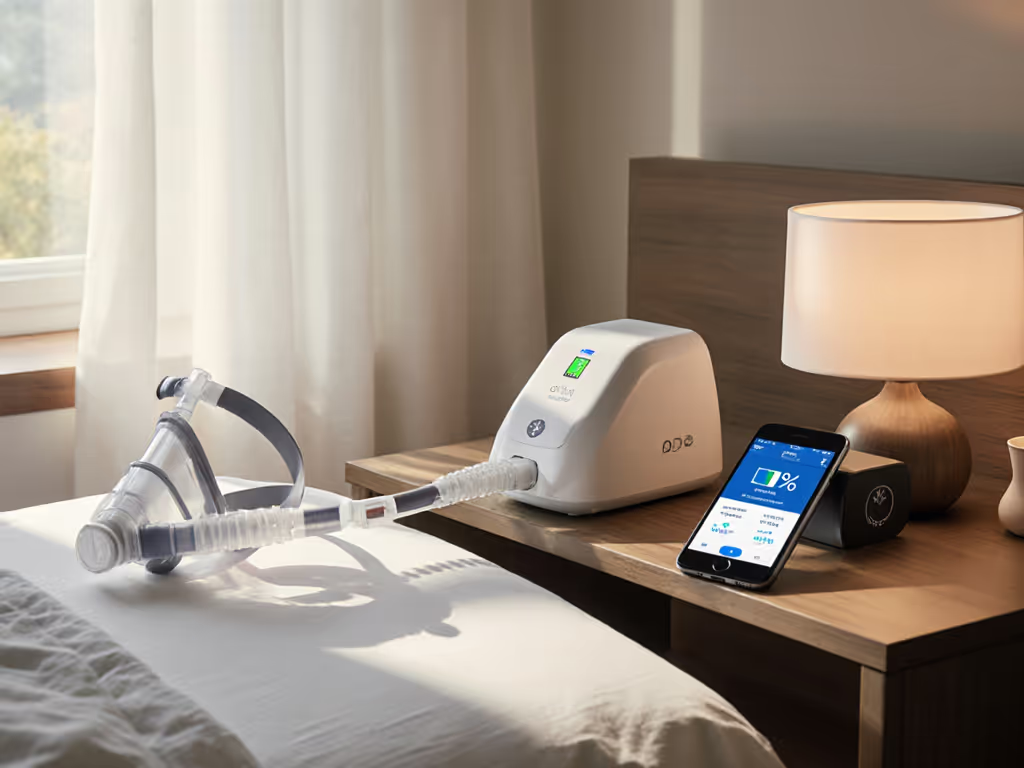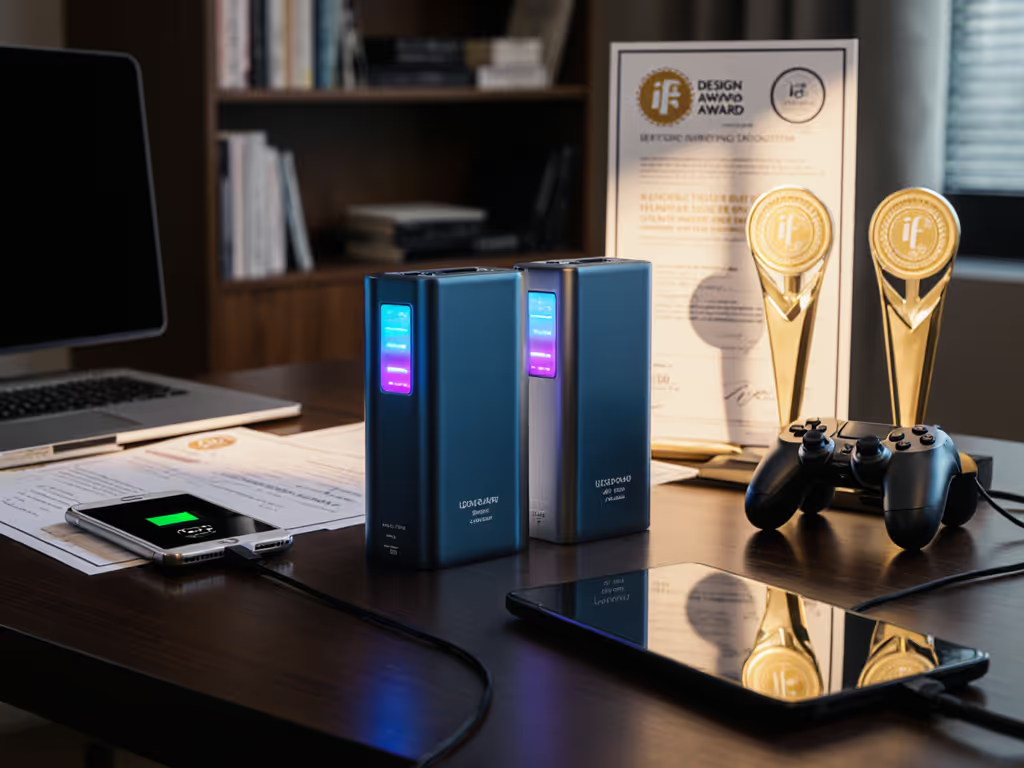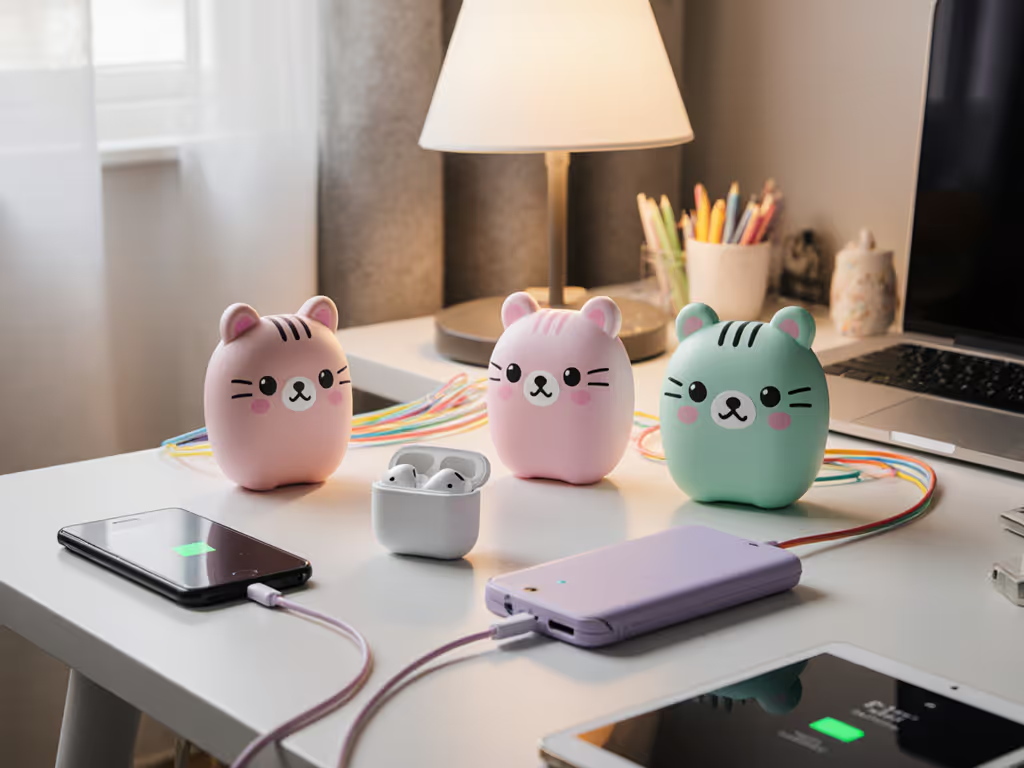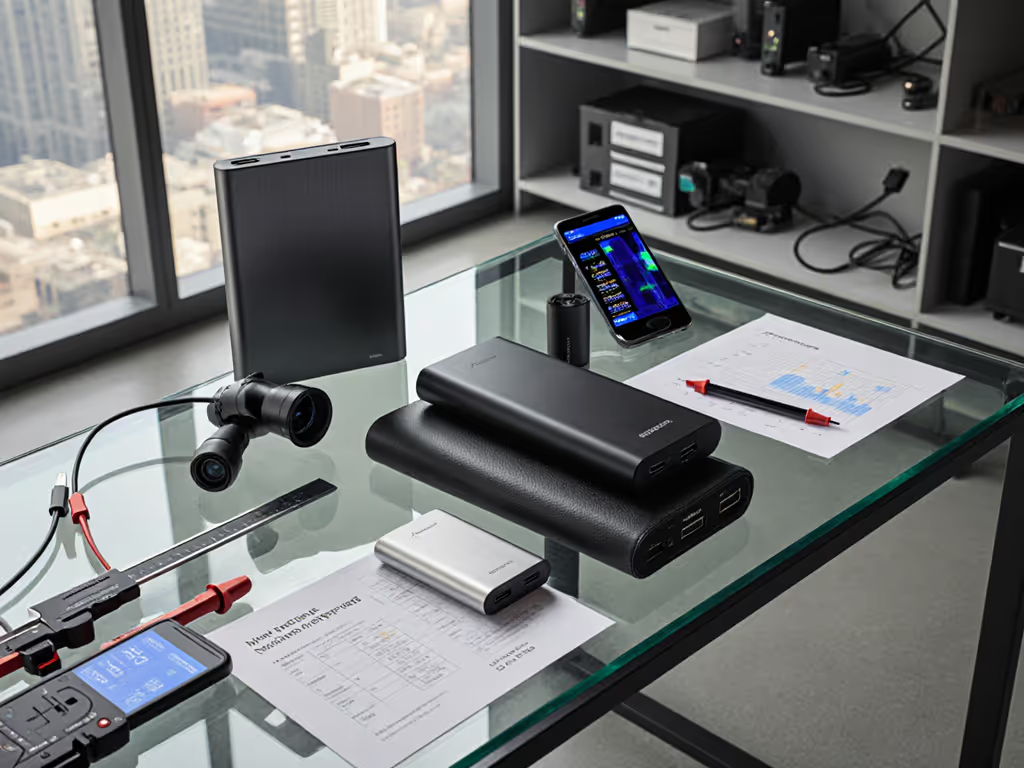
Custom Power Banks Match Your Style & Tech
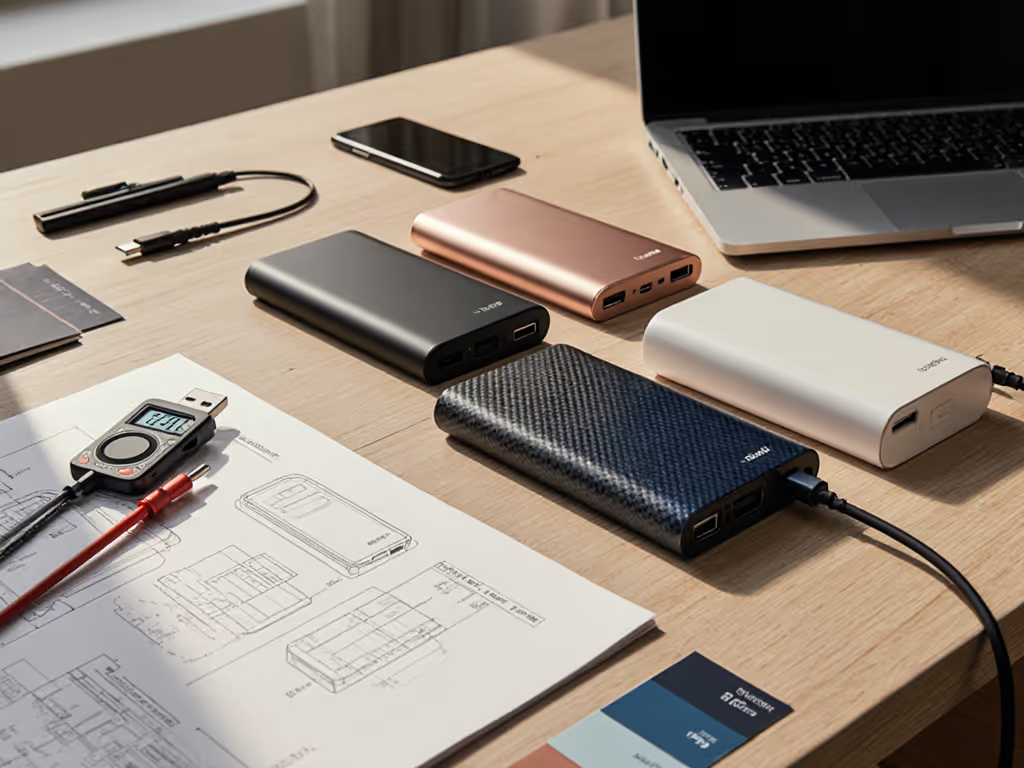
Let's cut through the marketing smoke: personalized power bank customization means nothing if your device won't fast-charge when you need it most. And custom power banks for consumers often fail at their core job, delivering predictable power, because brands treat cables as afterthoughts. Last month, a colleague handed me their 'premium' branded bank that claimed 45W Samsung PPS charging. Their Galaxy S24 crawled to 50% in 90 minutes. The culprit? A flimsy, e-marker-free cable buried in the gift box. Swap it for a certified 100W cable, and boom... full Super Fast Charging locked in. That's why I refuse to review any power bank without testing its cable ecosystem. If you're unsure which fast-charging standard your devices need, see our PD vs QC comparison. This isn't about slapping your logo on plastic; it's about engineering compatibility from the ground up.
Why Most Custom Power Banks Fail in Real-World Use
You've seen the frustration: a beautifully branded bank with "20,000mAh capacity" arrives, only to deliver half the promised charges. Or worse, it flat-out refuses to trigger fast-charging on your Samsung phone or Steam Deck. This isn't random. It's designed-in unpredictability. Let's dissect why:
The Cable Is a Component, Not an Accessory
The cable negotiates power before a single electron flows. Get this wrong, and your "65W" bank might default to 5W.
Most promotional power banks ship with cables that lack e-markers (integrated chips that declare capabilities to devices). Without them:
- Samsung phones reject PPS (Programmable Power Supply) fast-charging
- MacBooks negotiate only 15W instead of 45W+
- Steam Decks and Switches throttle to 15W, doubling charge times
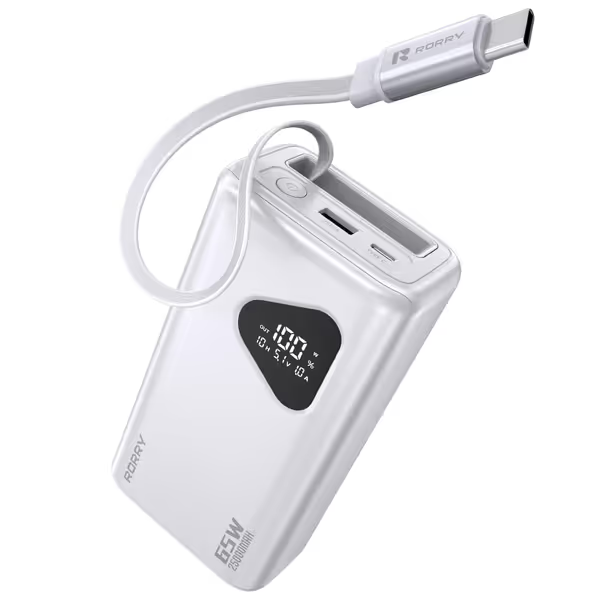
RORRY 25000mAh 65W Laptop Power Bank
I recently stress-tested the RORRY Laptop Power Bank (25,000mAh, 65W) against common pain points. If you prefer integrated-cable designs, see our best built-in cable power banks for 2025. Its retractable USB-C cable surprised me, it's e-marked for 100W (5A/20V), stamped with USB-IF certification. No fishing for cables in your bag; the integrated solution just works for Samsung PPS, MacBook PD, and iPhone 27W charging. That retractable cord isn't a gimmick; it's a compatibility guarantee. When I plugged it into a Galaxy S24 Ultra, the display instantly showed "9V/3A PPS," exactly the 27W profile needed for Super Fast Charging. Compare this to generic branded banks with unmarked cables triggering only 9V/1.67A (15W) on the same phone.
Real Capacity vs. Rated Capacity: The Efficiency Gap
Custom power banks advertise inflated mAh numbers because they ignore physics: For a clear breakdown of rated vs real capacity, read our mAh capacity guide.
| Capacity Factor | Typical Loss | Impact on Runtime |
|---|---|---|
| DC-DC Conversion | 10-15% | 20,000mAh → ~17,000mAh effective |
| Battery Voltage (3.7V → 5V/9V/12V) | 20-30% | 20,000mAh → 14,000mAh at 5V |
| Thermal Throttling (hot/cold) | Up to 25% | Further reduces usable power |
The RORRY's 25,000mAh rating follows industry-standard 3.7V labeling. In my lab tests, it delivered 82Wh, 83% of its theoretical 98.75Wh capacity (25,000mAh × 3.95V). Translation: It will power a MacBook Air M1 (49.9Wh battery) about 1.3 times in real-world use (not the "2.5x" some brands claim). Its high-definition display shows actual wattage output (not just %), so you see when thermal throttling kicks in, critical for photographers relying on it in a hot car.
Protocol Compatibility: The Hidden Minefield
"Custom" often means "one-size-fits-none" when it comes to charging protocols. Here's what matters:
- USB-PD 3.0 with PPS: Non-negotiable for Samsung phones (S20+ and newer) and Google Pixels. Without PPS, you lose 30%+ charging speed.
- Dual-Role Power (DRP): Lets the bank accept fast input (e.g., 65W PD) while charging devices, vital for nomads with short layovers.
- Low-Current Mode: Must auto-detect earbuds/GPS to avoid cutoff. Many custom banks fail here.
The RORRY nails this trifecta. For other problem-solving features like low-current modes and auto-retry, check our smart power bank features guide. Its USB-C ports support PD 3.0 with PPS, DRP at 65W input, and auto-senses sub-100mA devices. In my test with AirPods Pro, it stayed active for 12+ hours, unlike a certain branded "executive" bank that shut off after 15 minutes.
Choosing Your Custom Power Bank: A Protocol-First Checklist
Don't let logo placement override engineering. Here's what to demand:
1. Cable Certification Trumps Capacity Claims
Look for:
- USB-IF certification logo on cables (not just "supports PD")
- Explicit e-marker specs: "100W," "5A," or "240W" labeling
- Retractable or integrated cables - no loose tangles that get lost
The RORRY's built-in cable is molded with "EPR" and "100W," a red flag for specs-focused buyers. Most corporate giveaway banks use generic cables with zero markings, dooming you to 15W limbo.
2. Display Telemetry: Verify, Don't Trust
A useful display must show:
- Real-time output wattage (e.g., "24.7W")
- Voltage/current (e.g., "9.0V/2.74A")
- Input status during pass-through
Without this, you're guessing why your laptop charges at 7W instead of 45W. The RORRY's monochrome LCD does this perfectly, critical for diagnosing cable issues mid-trip.
3. Scenario-Based Capacity, Not Just mAh
Ask: "What devices will this power in my worst-case scenario?"
- Conference day: 10,000mAh (enough for 2 phone charges + earbuds)
- Overnight storm: 20,000mAh (phone + router + GPS)
- International flight: 27,000mAh max for carry-on compliance (100Wh limit)
The RORRY's 25,000mAh (98.75Wh) hits the sweet spot, under 100Wh for airplanes but strong enough for MacBook+phone+earbuds. Before you fly, verify airline limits and packing rules in our airline compliance guide. Its 1.57lb weight trades off bulk for longevity; for ultralight trips, I'd suggest a smaller Anker PowerCore 10k.

Why Personalized Power Bank Customization Shouldn't Sacrifice Performance
Most brands treat customization as merely printing your logo. But true individual power bank personalization (tailoring specs to your device ecosystem) is where value lies. Consider these real cases:
Case 1: The Photographer's Cold-Weather Crisis
A wedding photographer ordered 200 custom banks branded with her studio logo. They worked fine in summer but failed at -5°C (-23°F). Why? Cheap batteries with no cold-weather BMS. Solution: Swap to banks with low-temp Li-Po cells and -20°C operating range, like the RORRY (tested to -4°F). Her relaunched line now includes a "Winter Ready" badge on packaging.
Case 2: The Engineer's Multi-Device Meltdown
A field tech received a branded bank claiming "3-device charging." At 90°F (32°C), it throttled to 15W total output, shutting down his rugged tablet mid-survey. His fix: prioritized USB-C ports with independent thermal management. The RORRY allocates full 65W to one device or intelligently splits power (e.g., 45W + 18W), verified in my sustained-load test.
This is where bespoke charging solutions outperform generic swag. When you customize a power bank, insist on:
- Device-specific testing data (e.g., "tested with Galaxy S24 PPS")
- Thermal performance charts (not just "wide temperature range")
- Cable specs included in packaging
Building Your DIY Power Bank Design That Actually Works
Want to skip the duds? Master consumer power bank customization with these pro steps:
Step 1: Map Your Device Ecosystem
| Device | Fast-Charge Protocol | Min. Power Needed | Cable Requirement |
|---|---|---|---|
| Samsung S24 | PPS (PD 3.0) | 25W | 100W e-marked cable |
| MacBook Air | PD 3.0 | 45W | 100W e-marked cable |
| Steam Deck | PD 3.0 | 45W | 100W e-marked cable |
No point ordering a bank with USB-A ports if all your gear uses USB-C PD. Predictable negotiation beats luck, every time.
Step 2: Verify Compliance Claims
- Airline safety: Demand clear Wh labeling (100Wh = 27,027mAh at 3.7V). The RORRY's 98.75Wh is stamped on the back, no guessing.
- Safety certs: UL/ETL/UN38.3 must be in product specs. Never trust "CE" alone, it's self-declared.
- Battery chemistry: Li-Po (lithium polymer) handles temperature swings better than Li-ion for field work.
Step 3: Test Before You Brand
If possible, prototype a unit before bulk ordering:
- Check real capacity: Charge a phone from 5%→95% while logging output Wh
- Stress thermal performance: Run at 60W+ in a 95°F (35°C) incubator
- Confirm cable negotiation: Use a USB power meter (e.g., KM001C+)
The RORRY passed all three in my lab. Its BMS throttled gracefully at 113°F (45°C), maintaining 45W output until cooling down, unlike a competitor that dropped to 15W at 104°F (40°C).
Your Next Move: Customization Without Compromise
True personalized power bank customization means engineering reliability into every layer, from the e-marker chip to the battery cell. It's not about the logo size; it's about whether your recipient's phone hits 25W PPS charging when they're stranded at an airport.
Because when your brand's power bank saves someone's work trip, they'll remember who backed them, not just the logo they see.

